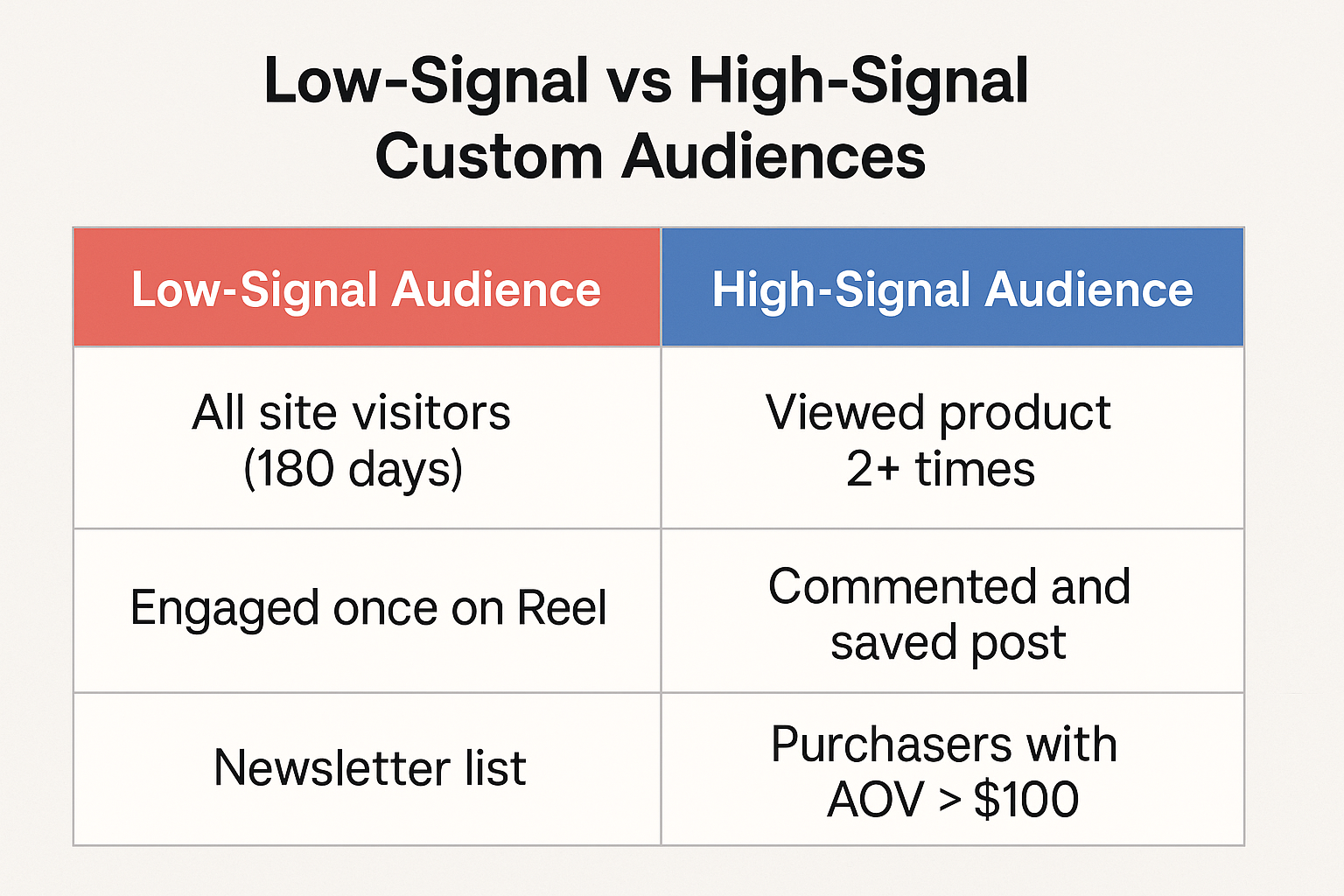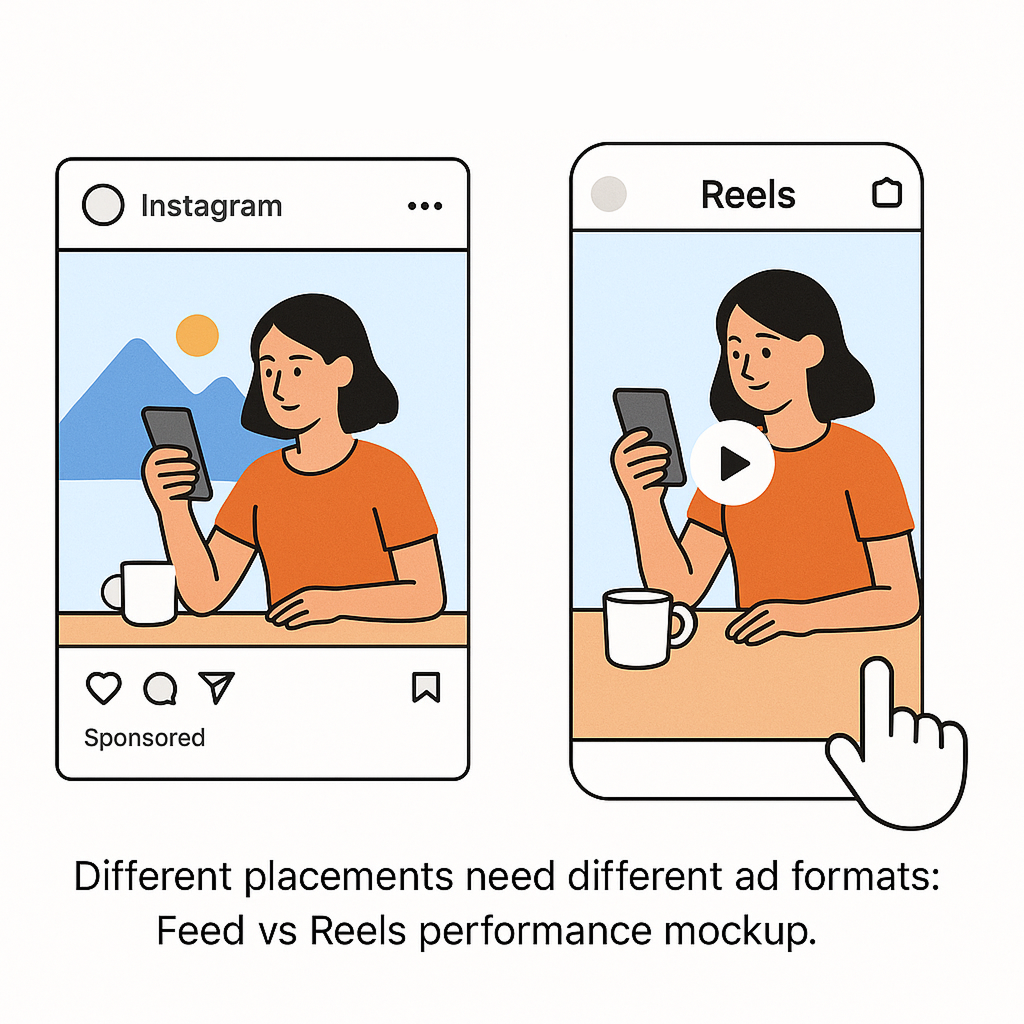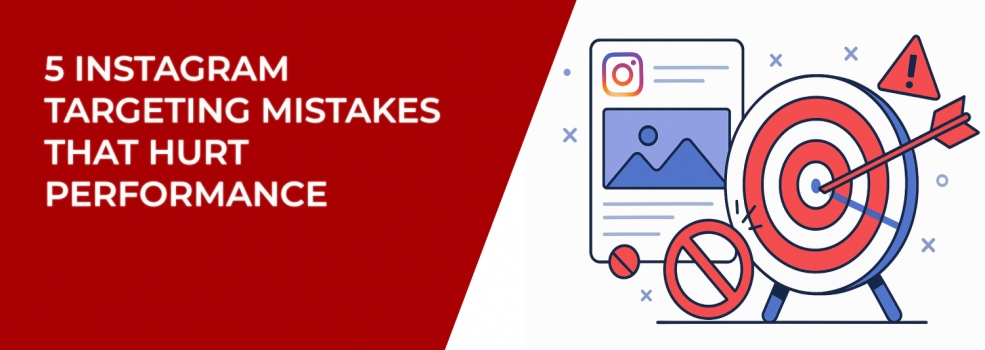If you’re running Instagram ads and not getting the results you expected, the problem might not be your creative or budget. It might be your targeting.
Reaching the right audience on Instagram in 2025 isn’t just about picking a few interests and clicking “boost.” It’s a discipline. One that, when mismanaged, leads to high CPMs, low engagement, and missed revenue — especially for small businesses and DTC brands across the U.S., U.K., and other competitive markets.
In this article, we’re breaking down 5 common Instagram ad targeting mistakes advertisers make — and how to fix them with smarter, data-driven strategies. These aren’t generic tips. Each one should be tested, refined, and aligned to your specific vertical and geo.
1. Using Broad Interest Targeting That Dilutes Your Reach
Most advertisers still rely on surface-level interests like “fitness,” “e-commerce,” or “entrepreneurship” to build their Instagram audiences. The issue? These interests are overused, loosely defined by Meta, and rarely lead to consistent conversions — especially in geo-specific campaigns where intent varies by region.
What to do instead:
-
Layer multiple niche interests (e.g., “plant-based nutrition” + “eco-conscious consumers”) to form tighter segments.
-
Use interest stacking with exclusions to eliminate low-fit users.
-
Focus on behavioral overlap, not just surface-level categories.
For deeper insights, explore How to Use Facebook Detailed Targeting to Reach Micro-Niche Audiences.
This is especially useful if you’re running geo-specific campaigns and want to align your targeting with regional behaviors or demographics.
2. Not Segmenting Custom Audiences by Intent
Running retargeting ads to “all website visitors” or “180-day engagers”? You’re not alone. But in 2025, this approach is simply too blunt.

Not all warm audiences are created equal. Users who bounced after 3 seconds shouldn’t be treated the same as someone who added a product to cart or engaged with your brand twice in the same week.
Try this instead:
-
Build high-signal custom audiences using pixel data (e.g., time-on-site, scroll depth).
-
Segment based on recency (3-day vs 14-day vs 30-day retargeting).
-
Test creative variations based on where users dropped off in the funnel.
If you’re not sure where to begin, check out The Secret to Retargeting Success on Instagram — especially helpful if you're targeting mobile-first audiences in urban U.S. or EU metros.
3. Using Poorly Built Lookalike Audiences
Lookalike audiences still work — but only if the source data is rich, current, and aligned with your buyer profile. Too many campaigns are built using outdated email lists, random web visitors, or mixed audience buckets.
This leads to a lookalike that isn’t really “alike” at all.
To fix it:
-
Use LTV-based or purchase-qualified audiences for seed data.
-
Segment by region or product category (especially for U.S. regional or international targeting).
-
Limit expansion to 1%–2% lookalikes, then test upwards with exclusions.
Struggling with low ROAS from lookalikes? Read Why Your Lookalike Audiences Underperform (And What to Do About It).
4. Overlapping Audiences Across Ad Sets
If you’re running multiple campaigns targeting similar or identical audiences — for example, using the same lookalike audiences across prospecting and retargeting — you might be cannibalizing your own results.
This audience overlap causes Meta’s algorithm to bid against itself, inflating CPMs and harming delivery.
What you should do:
-
Use Meta’s audience overlap tool weekly.
-
Add exclusions between prospecting and warm campaigns.
-
Separate lookalike types by funnel stage (e.g., 1% for top-of-funnel, 2–5% for retargeting lookalikes).
For a full breakdown of how to prevent this from happening, see The Role of Audience Overlap in Facebook Ads Performance.
This is particularly relevant if you manage large budgets or multiple campaigns in different countries or cities.
5. Ignoring Placement-Specific Behavior on Instagram
Instagram isn’t just one channel — it’s four: Feed, Stories, Reels, and Explore. Each placement has different user behaviors, content expectations, and scroll speeds.

Yet most campaigns run the same targeting, same creative, and same messaging across all of them.
Smarter Instagram ad targeting starts with:
-
Analyzing placement data separately in Ads Manager.
-
Tailoring creative to match the micro-moments of each placement.
-
Testing different audience segments by placement (e.g., Reels might work better for Gen Z audiences in urban metros).
To see how placement impacts every stage of your funnel, read Instagram Feed vs Story Ads: What Performs Better for Each Funnel Stage?.
Final Thought: Precision Beats Popularity
The truth is, most Instagram ads fail not because the platform is too competitive — but because the targeting is too lazy. Smart targeting isn’t just about finding more people. It’s about finding the right people, at the right time, with the right message.
And that means testing. Segmenting. Adapting.
Whether you're a local business in Los Angeles or a global e-commerce brand scaling across Europe, your targeting strategy is the foundation of your success on Instagram.
Start with these fixes and watch your performance metrics shift from unpredictable to consistent.

